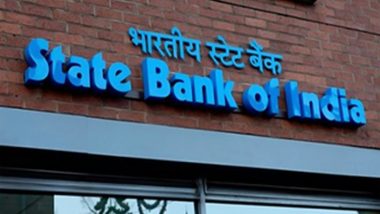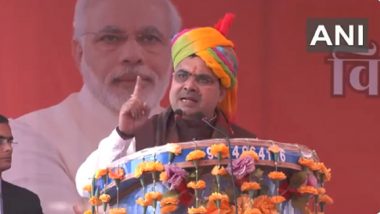Mumbai, October 12: State Bank of India's house economists on Monday said the recent farm sector reforms reek of parochial thinking and promote lazy farming as they only cater to cereal-producing states. In the recently concluded monsoon session, the government rushed through three legislation to change the way agricultural produce is marketed, sold and stored by dismantling the decades-old APMC (Agricultural Produce Market Committee) mandis. Also Read | How to Blur Background in Google Meet.
Welcoming the legislation that claim to enhance production and farmers' income, the economists at SBI Research on Monday said, "These measures are sine qua non as the country is no more just a cereal granary, and other states are producing diversified crops."
Pencilled by SBI Chief Economist Soumyakanti Ghosh, the report, titled 'Agri-reforms politics: Catering to only cereal producing states and shunning fruits and vegetable is lazy farming and parochial thinking', said, "We are no more just a cereal granary and it is time that we go for white revolution." Also Read | Flipkart Big Billion Days Sale 2020: Exciting Offers & Massive Discounts on Oppo, Realme, Samsung, Poco & More.
The report also says it is skewed in favour primarily of Punjab and Haryana that led the green revolution but neglect bigger and more important rice-producing states like UP and Bengal.
Further, the report noted that over the years, share of cereals in the value-addition of crops has plunged from a high of 49 per cent in 1968-69 to 28 per cent in 2018-19, while that of fruits and vegetables has grown rapidly to 30 per cent in crop output from 14 per cent in 1968-69.
"It is an irony that value of cereals per hectare is 12 times less than fruits and vegetables, but we keep on eulogising cereal production. Fruit and vegetables have the highest value of output per hectare followed by condiments and spices," said the report.
State-wise data, published by NAS from 2011 to 2017, shows there are only eight states that had a higher percentage of output coming from cereals rather than fruit and vegetables in 2016-17 and among these, Punjab and Haryana derive over 50 per cent of their crop output from cereal, noted the report.
"Unfortunately, we follow a legacy and lopsided system of procurement of primarily cereals that was implemented in the 1960s to benefit from the cereal granary states in the north, primarily Punjab and Haryana," said the report. A large part of the edifice of food grain procurement infrastructure is built around these states, it added.
For example, while UP and Bengal are the No. 1 and 2 in rice production, Food Corporation of India (FCI) procures only 18 per cent from these states, but in Punjab and Haryana (number 10th), which are lower in rice production, the average FCI procurement is still a staggering 90 per cent. Similarly, UP is the largest producer of wheat also, but again a laggard in procurement.
"Such lopsided procurement has resulted in significantly skewed income of farmers with average income in Punjab at Rs 2.8 lakh being 3-3.5 times higher than in Uttar Pradesh and Bengal," said the report.
The total number of farmers who are currently benefitting from new initiatives like e-NAM, organic farming incrementally stands at 3.4 crore. If we add to that 1.5 crore benefitting from procurement, the number is around 4.9 crore, but the total farmers' universe is 14.6 crore.
Food retail market is expected to touch Rs 62 lakh crore by 2023, driven by shift in consumption away from low value staples to high value proteins like fish, meat, eggs, and pulses, dairy items, fruit and vegetables.
Our farm exports touched USD 37 billion in 2019-20 offering it a paltry 2.1 per cent share in world agri exports. This is around 10 per cent of the country's exports but most of these exports are low value, raw or semi processed, and marketed in bulk. Share of high-value and value-added agri produce is under 15 per cent, compared to 25 per cent in the US and 49 per cent in China.
On the stated aim of these new laws to liberalise trade and increase buyers, the report noted that deregulation alone is not sufficient to attract more buyers. What is needed is building infrastructure and educating farmers about the potential income they can generate by moving to other agri-produce, it added.
(This is an unedited and auto-generated story from Syndicated News feed, LatestLY Staff may not have modified or edited the content body)













 Quickly
Quickly




















